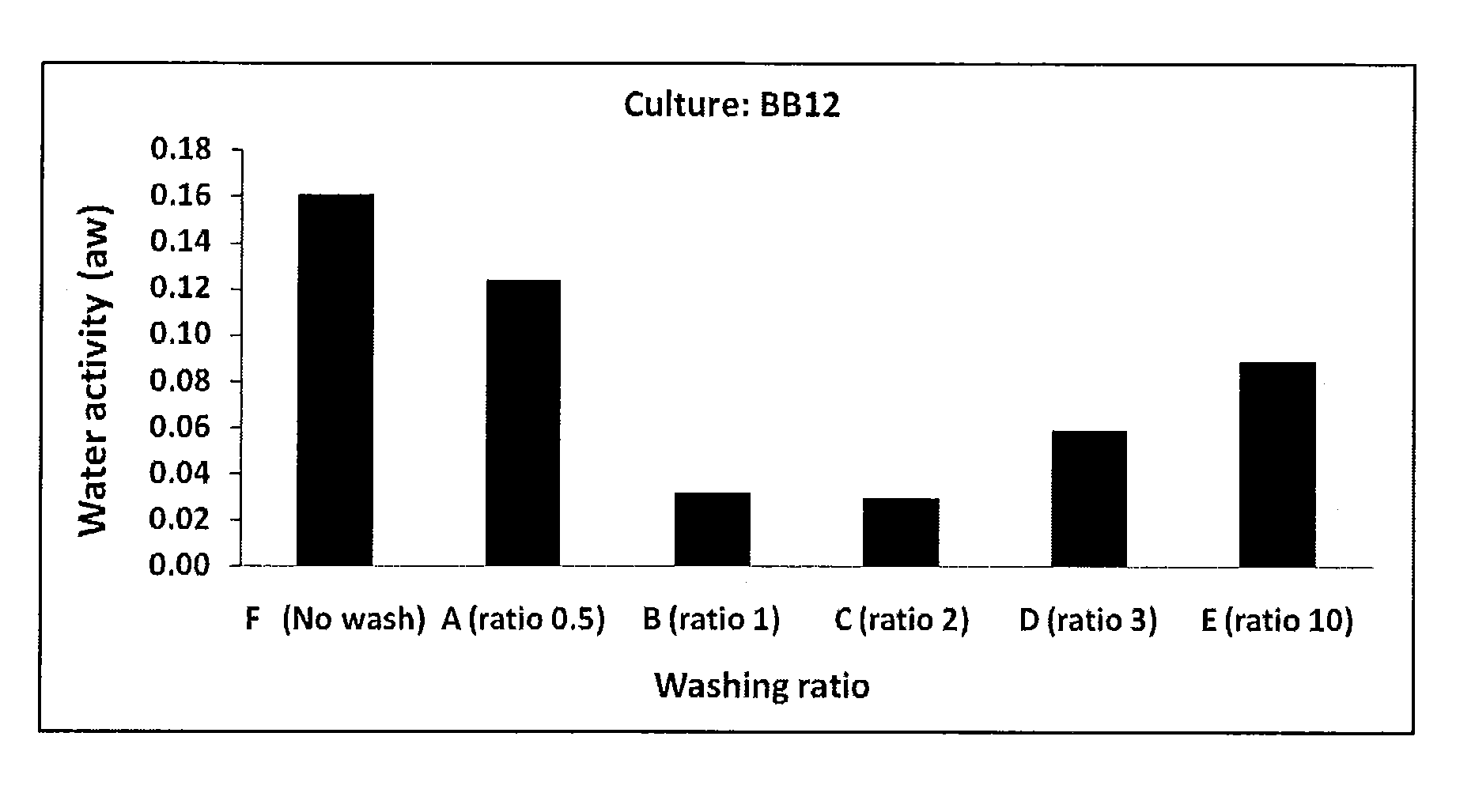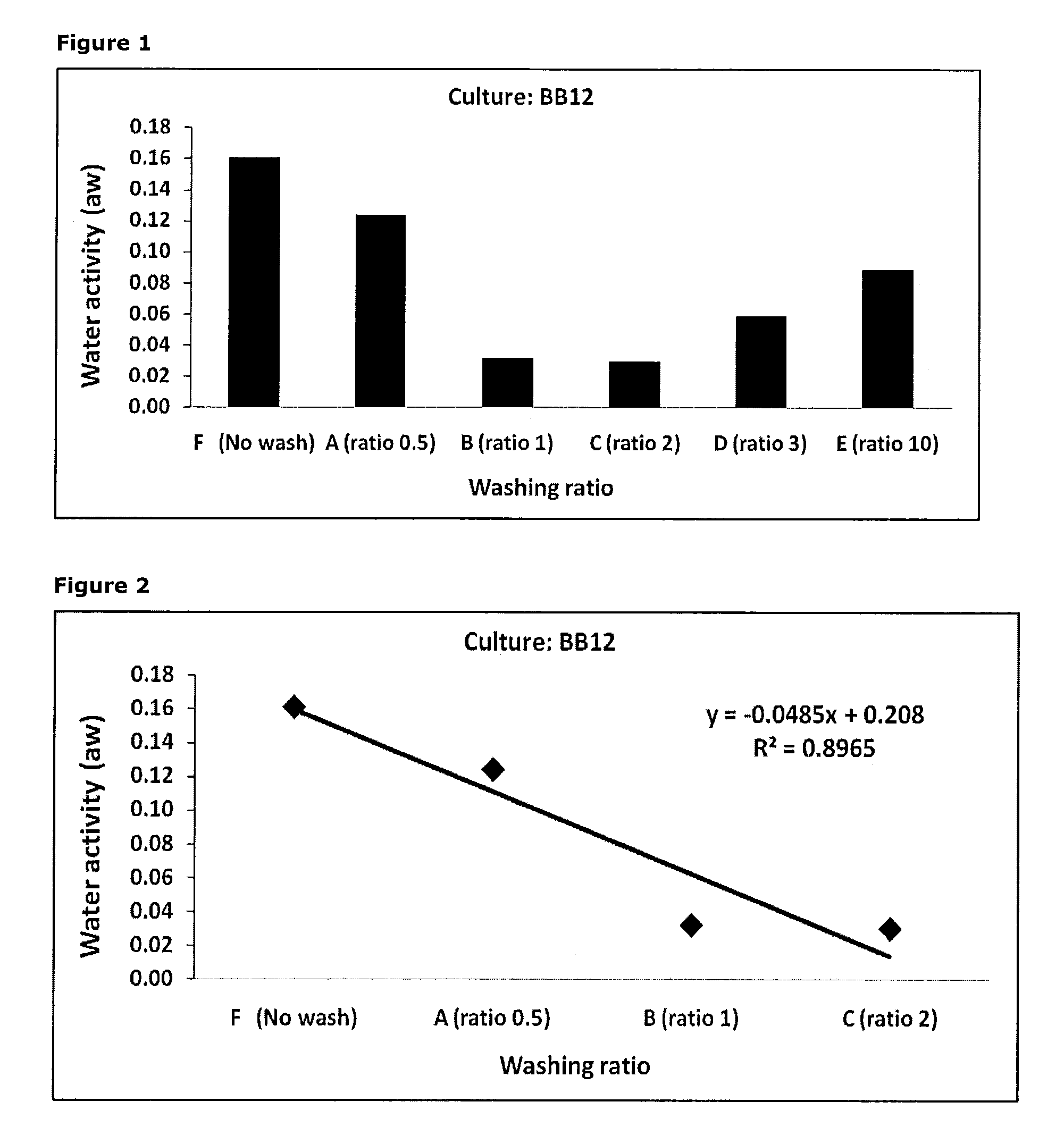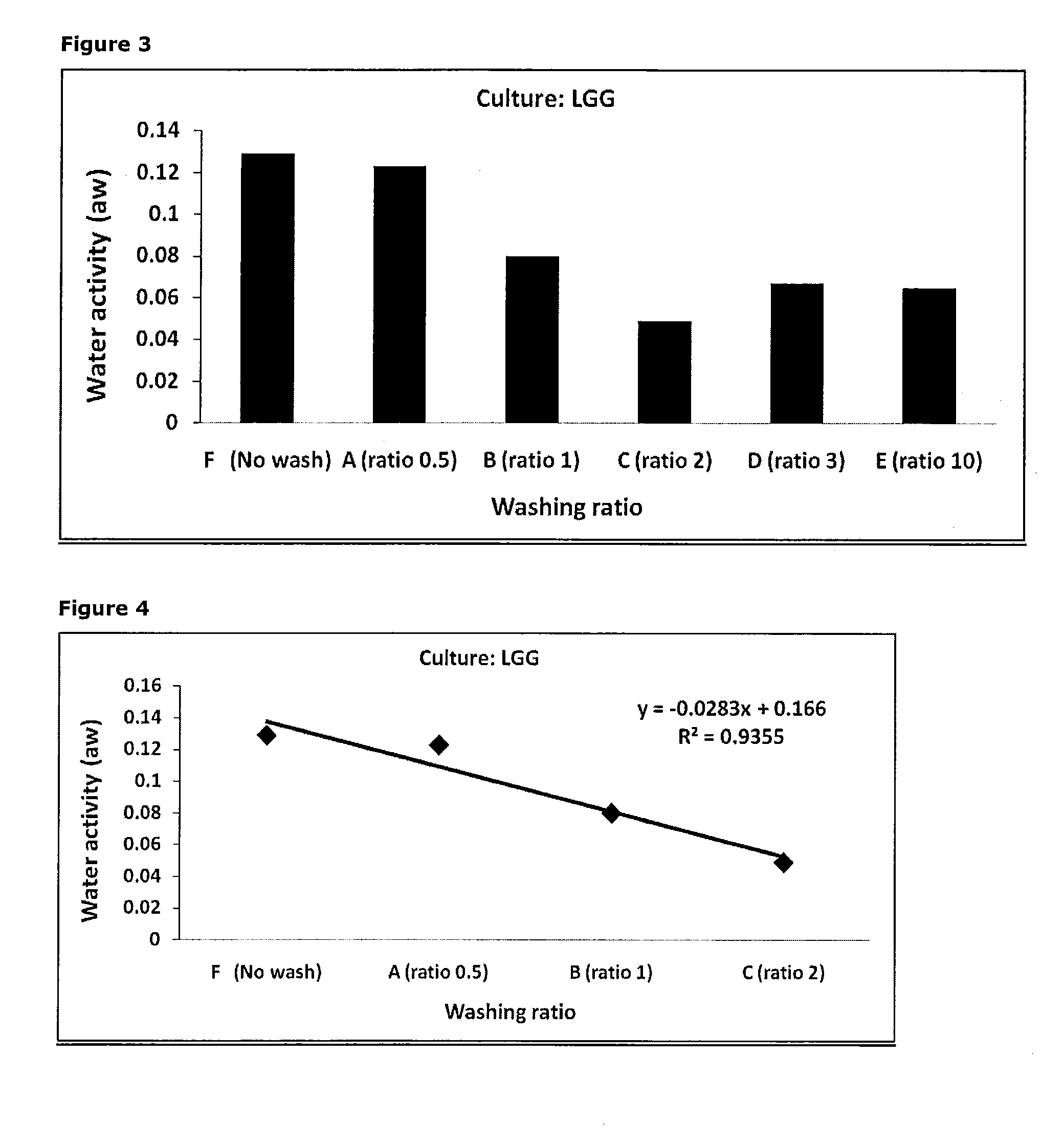Method for purifying bacterial cells
a technology for purifying bacteria and cells, applied in the field of purifying bacteria, can solve the problems of affecting not only viability, but also the rate of loss of viability during subsequent storage, and achieve the effect of improving the viability of bacteria and improving the storage stability of bacteria-containing concentrates
- Summary
- Abstract
- Description
- Claims
- Application Information
AI Technical Summary
Benefits of technology
Problems solved by technology
Method used
Image
Examples
example 1
Bifidobacterium animalis BB-12: Comparison of Unwashed Vs. Washed Concentrates with Respect to the Effect of the Washing Ratio on Water Activity of Freeze-Dried Products. Water was Used as the Washing Solution
[0185]The Bifidobacterium animalis strain BB-12 was cultivated in MRS medium under standard conditions with controlled pH and temperature during the fermentation in a 700 L reactor, the culture was harvested at early stationary phase and concentrated approx. 14 fold by centrifugation.
[0186]After centrifugation, the bacterial concentrate was divided into 6 portions.
[0187]5 portions were mixed with water (deionised) in various ratios (ranging from 0.5 to 10) resulting in washed concentrates A-E as given below. The washing was done for 15 min at room temperature using a magnetic stirrer. After washing, the cells were harvested by lab-scale centrifugation (Sorvall RC 6 Plus, Thermo Scientific) for 20 minutes at 10000 g and 4° C. A part of the supernatant was removed after centrifug...
example 2
Lactobacillus rhamnosus LGG: Comparison of Unwashed Vs. Washed Concentrates with Respect to the Effect of the Washing Ratio on the Water Activity of Freeze-Dried Products. Water was Used as the Washing Solution
[0200]The LGG® was cultivated in MRS medium under standard conditions with controlled pH and temperature during the fermentation in a 700 L reactor. The culture was harvested at early stationary phase and concentrated approx. 14 fold by centrifugation. After centrifugation, the bacterial concentrate was divided into 6 portions, washed with deionized water, and a cryo-protective solution was added as described in Example 1. Freeze-drying and water activity measurements were performed as described in Example 1.
Results
[0201]The experiment presented in this example is identical to that given in Example 1 except that it was carried out with another bacterial culture, i.e. the Lactobacillus rhamnosus LGG. The results are presented in FIG. 3.
[0202]The results of this experiment are i...
example 3
Lactobacillus acidophilus LA-5: Comparison of Freeze-Dried Products of Washed and Unwashed Cell Concentrates with Respect to Five Different Washing Solutions
[0209]The culture La-5 was cultivated in MRS medium under standard conditions with controlled pH and temperature during the fermentation, in a 700 L reactor. The culture was harvested at early stationary phase and concentrated approx. 14 fold by centrifugation.
[0210]After centrifugation, the bacterial concentrate was divided into 5 portions. 4 portions were mixed with a particular washing solution (see table below), i.e. one volume of concentrate was mixed with two volumes of washing solution as given below (A, B, C, D). 1 portion was used as control (unwashed concentrate E).
[0211]The washing process, addition of cryo-protective solution, freeze-drying, and water activity measurements were performed as described in Example 1. The following washing solutions were used:
[0212]
Ratio of washing solution toPortionculture concentrateWa...
PUM
| Property | Measurement | Unit |
|---|---|---|
| temperature | aaaaa | aaaaa |
| volume | aaaaa | aaaaa |
| pore size | aaaaa | aaaaa |
Abstract
Description
Claims
Application Information
 Login to View More
Login to View More - R&D
- Intellectual Property
- Life Sciences
- Materials
- Tech Scout
- Unparalleled Data Quality
- Higher Quality Content
- 60% Fewer Hallucinations
Browse by: Latest US Patents, China's latest patents, Technical Efficacy Thesaurus, Application Domain, Technology Topic, Popular Technical Reports.
© 2025 PatSnap. All rights reserved.Legal|Privacy policy|Modern Slavery Act Transparency Statement|Sitemap|About US| Contact US: help@patsnap.com



